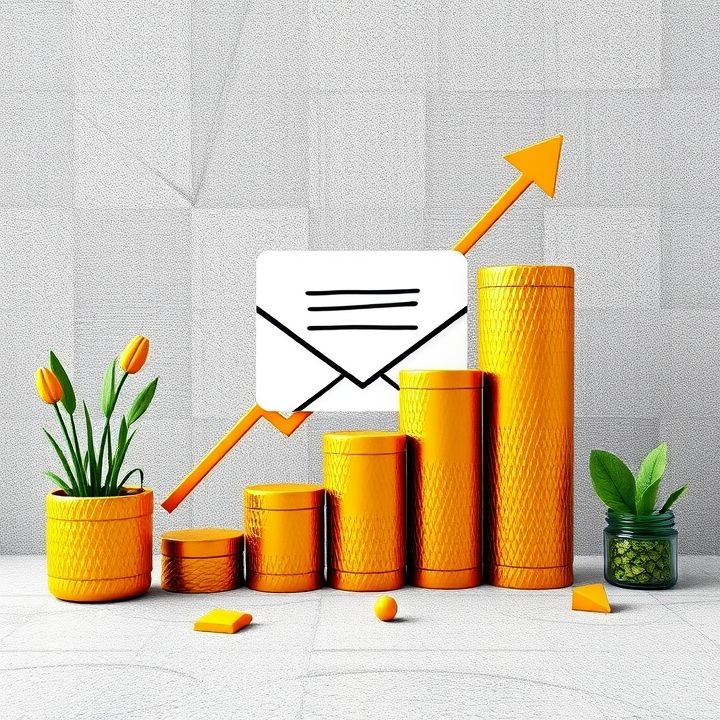Table of Contents
- Introduction
- Understanding Behavioral Triggers in Email Marketing
- Identifying Key Customer Actions and Events
- Leveraging Automation Tools for Real-Time Responses
- Crafting Personalized Email Content Based on Behavior
- Timing Your Emails: Best Practices for Engagement
- Conclusion
- Frequently Asked Questions
Introduction
In the bustling world of digital communication, timing is everything. Sending an email at the perfect moment can mean the difference between an engaged customer and an ignored message. How do you master this art? Enter the realm of behavioral triggers and automation—your keys to unlocking perfectly timed email sends.
Imagine a system so smart it knows when your customer is most likely to open an email, click through, and make a purchase. Behavioral triggers are rapidly revolutionizing the way businesses communicate with their audiences by responding to actions like website visits or previous interactions. Combine this with automation, and you have a powerhouse of personalization working tirelessly in the background.

Here’s a simple breakdown to get you excited about the potential:
| Key Component | Impact |
|---|---|
| Behavioral Triggers | Boosts engagement by sending emails based on user actions. |
| Automation | Saves time and ensures timely delivery of emails. |
Curious about how these elements come together to enhance your email marketing strategy? Dive deep into our exploration of sending perfect emails through behavioral triggers and automation!
Understanding Behavioral Triggers in Email Marketing
Understanding behavioral triggers in email marketing is crucial for creating personalized and timely communications. Behavioral triggers are actions or events that prompt an automated response, often seen in email marketing to improve customer engagement and conversion rates. These triggers can include actions such as opening an email, clicking a link, browsing a website, or abandoning a shopping cart. By utilizing data-driven insights, marketers can segment their audience based on these behaviors and send tailored email content that aligns with the recipient’s actions and preferences.
This approach ensures that each email is relevant to the audience, thereby increasing the likelihood of engagement. For example, if a customer frequently browses a particular product category but doesn’t make a purchase, an automated email suggesting similar products or offering discounts can be triggered. Such personalized emails help in nurturing leads, maintaining customer relationships, and ultimately driving sales. Automation tools facilitate this process by monitoring user behavior in real time, allowing marketers to efficiently manage campaigns and respond dynamically to consumer actions. Overall, leveraging behavioral triggers in email marketing is a powerful strategy to deliver the right message to the right person at the right time.
Identifying Key Customer Actions and Events
Identifying key customer actions and events is the foundation for leveraging behavioral triggers and automation in email marketing. The first step involves analyzing the customer journey to determine the actions that signify significant engagement or intent. These actions can include browsing specific product pages, adding items to a cart, making a purchase, or abandoning a cart. Recognizing these behaviors allows marketers to set up automated responses that feel timely and personal to the customer.
Additionally, events such as a customer’s birthday, anniversary with a brand, or a prolonged period of inactivity can be used to trigger automated emails. Identifying these moments provides opportunities to re-engage customers through personalized messages or offers. An effective way to track these actions and events is through the integration of email marketing platforms with CRM systems and analytics tools. These tools help in collecting and analyzing customer data, enabling marketers to tailor their communication strategies accordingly.
By effectively mapping out these customer touchpoints, businesses can ensure that their automated emails are relevant and have a higher likelihood of converting interactions into sales or deeper customer loyalty.
Leveraging Automation Tools for Real-Time Responses
Automation tools are transforming the way businesses engage with their audience, making real-time responses more achievable and effective. These tools are designed to help marketers send timely and relevant emails by using predefined triggers based on user behavior. For instance, when a customer abandons their shopping cart, an automation system can immediately send a reminder email, encouraging the customer to complete the purchase. Similarly, a behavior such as a user visiting a specific product page multiple times can trigger a personalized discount offer.
The key to leveraging automation for real-time responses lies in setting up workflows and rules that align with your marketing goals. By integrating data from various channels, automation platforms can analyze user behavior and segment audiences for more targeted communication. This not only enhances customer experiences but also boosts conversion rates.
Moreover, automation tools enable businesses to nurture leads throughout the customer journey. From welcome emails for new subscribers to regular updates for engaged customers, real-time automation ensures that each interaction is timely and relevant. By investing in robust automation solutions, businesses can stay ahead in the competitive landscape, providing their audience with the immediate attention they demand.
Crafting Personalized Email Content Based on Behavior
Crafting personalized email content based on behavior is a powerful strategy that leverages user data to enhance engagement. By analyzing user actions such as previous purchases, browsing history, or interaction patterns, businesses can tailor their email communications to meet specific customer needs. This approach transforms generic messages into relevant content that resonates with individual recipients, fostering a stronger connection between the brand and its audience.
To execute this effectively, it is crucial to segment your audience based on their behavior and preferences. For instance, if a user frequently searches for tech gadgets, sending them updates and offers about the latest technology products can significantly increase the likelihood of conversion. Use marketing automation tools to track these behaviors and trigger emails automatically when specific criteria are met, ensuring the content is timely and relevant.
Personalization goes beyond merely inserting a recipient’s name; it involves understanding their journey and predicting their needs. By doing so, businesses not only improve open rates and click-through rates but also build trust and loyalty. Remember, the key is to deliver value by providing information that aligns with each user’s interests and activities. Well-crafted behavioral emails can seamlessly integrate into the user’s life, making the brand appear more intuitive and customer-centric.
Timing Your Emails: Best Practices for Engagement
Timing your emails effectively is crucial for maximizing engagement and ensuring your message reaches your audience at the right moment. Understanding the habits and preferences of your target audience can significantly influence open and click-through rates. Generally, sending emails early in the week, particularly on Tuesday or Thursday mornings, can yield better results, as people are more likely to check their inbox at the beginning and middle of the workweek.
Moreover, considering the time zone of your recipients is essential to ensure your email lands during their active hours. Tools and analytics can assist in determining these patterns, allowing for more precise targeting. Segmenting your email list based on behavior and engagement levels is another key practice. This enables you to tailor send times for different groups, enhancing personalization and relevance.
Utilizing behavioral triggers, such as cart abandonment or page visits, can automatically initiate email dispatches, ensuring timing aligns with user actions. Similarly, leveraging automation tools can streamline this process, allowing you to set specific send times based on previously gathered data. By adhering to these best practices, you position yourself to deliver timely and relevant content that resonates with your audience, fostering deeper connections and increased engagement.
Conclusion
In the fast-paced world of digital marketing, mastering the art of timely and personalized email communication is crucial to staying ahead. As explored in our article, leveraging behavioral triggers and automation can transform your email marketing efforts by allowing for real-time interaction tailored to individual customer actions and preferences. With tools and technologies available today, businesses can not only identify key touchpoints in the customer journey but also craft engaging content that resonates on a personal level. This strategic approach ensures that your audience receives the right message exactly when they’re most receptive, driving not only conversions but also long-term loyalty.
Furthermore, by implementing best practices for email timing and utilizing automation to handle repetitive tasks, marketers can focus more on creative strategies and relationship building. Ultimately, embracing these advanced techniques will facilitate more meaningful connections with your customers, boosting engagement and enhancing brand perception. So, dive into the world of behavioral triggers and automation to unlock the potential of your email campaigns—because in today’s market, perfect timing isn’t just a luxury; it’s a necessity.
